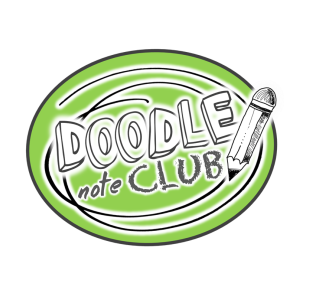
Even if you’re a doodle note pro, you’ve probably encountered some questions. There are so many different ways to use doodle notes in the classroom, and it makes it so much more fun (and smooth) when you implement doodle notes in creative and effective ways! Here are some FAQ’s we’ve gotten about using doodle notes in the classroom.
I hope these help answer any questions you may have. If you have more questions about anything and everything doodle notes- head over to the “Chat Zone” and post your question for the group.
Q: What are some creative ways to print and use doodle notes in your classroom?
A: The options are endless! Don’t be afraid to get creative with it. But if you need an idea to spark your creativity, here are some ideas from a few members:
“I print the doodle notes front-only – even if they are two pages. Then when the students are finished they insert them in their Interactive Math Notebooks by folding the page in half top-to bottom, then folding again to make quarters (writing inside). The put glue dots on the lower right hand quarter of the back and glue into the composition notebook. The folded page fits nicely and opens for easy reference.”
“I love the fact that doodle notes are in powerpoint because you can easily print two slides on a page for notes that will take up a half sheet and zip-zip cut them out and paste in INB or place in a binder… it’s up to you and your students. :)”
“ I put them in plastic pages inside a binder. :)”
“ I leave the left border wider (right for a back page) so that I can hole punch them and they can insert them into their math binders.”
“When I make them in Powerpoint I make the margins a bit smaller than 8.5×11 so that my students can cut them out to add to their interactive notebook. I include them as the notes for their entry, where they also need to do a warmup and reflection.”
Don’t forget- you can also use them digitally if you have a paperless classroom! Read this post to learn how to make visual note taking work digitally.
There are plenty more tips that answer this question inside the complete Doodle Note Handbook (and it is FREE!).

Q: How do you help along students who aren’t “doodle-happy”?
A: Occasionally, you’re going to get a handful of students who just aren’t into doodling. It’s especially common if students are used to videos and podcasts in class. Here are some ideas to help those students along:
“I would suggest posting a few examples of student notes. The thought of having your work displayed is always a motivator, no matter the age.”
“To help them along I actually had them create their own doodle note posters for our current math topic. It was a team activity and the rubric stated that they needed to use at least 4 colors, have 3 different graphics, a border, and 2 types of fonts. By the time they were done they didn’t want to stop doodling and most of them wanted argued to do it again by themselves.”
“Having fun-colored pencils/markers are a great incentive to doodle!”
Q: Should each lesson have a doodle note attached?
A: It’s completely up to you! If you get the sense your students are more engaged and retaining new material with doodle notes… then why not? If you only like doodle notes to create a relaxing, yet effective review day, then that’s fine!
Personally, I like each “big idea” to be done as a doodle note. (especially for math). Then, you can follow up with practice. So if I was teaching that unit, I guess I’d do one big doodle note for “Division Strategies” (either one big organizer for all the strategies or separate sheets for each), and then do practice, applications, focus in more deeply on each strategy, and do interventions etc. as follow-ups. I like doodle notes as an intro to each new idea.
However, some people prefer them as a review, so you can instead do them as graphic organizers at the end. Or both! There are a lot of options.

Q: How can I educate parents on the benefits of doodle notes?
A: It’s simple! Just download this free Informational Handout and either print copies or send along in an email!
This is a perfect way to share the concept with parents, administrators, co-teachers, and even students. Share the brain research, show what is going on in your classroom during lecture and note-taking times, and explain why YES, you DO encourage doodling in class!
Soon, we’ll some FAQ’s and answers about creating doodle notes, so be sure to let us know if you have any burning questions we can help answer!

For more support as you teach with doodle notes, join our facebook group here.










































